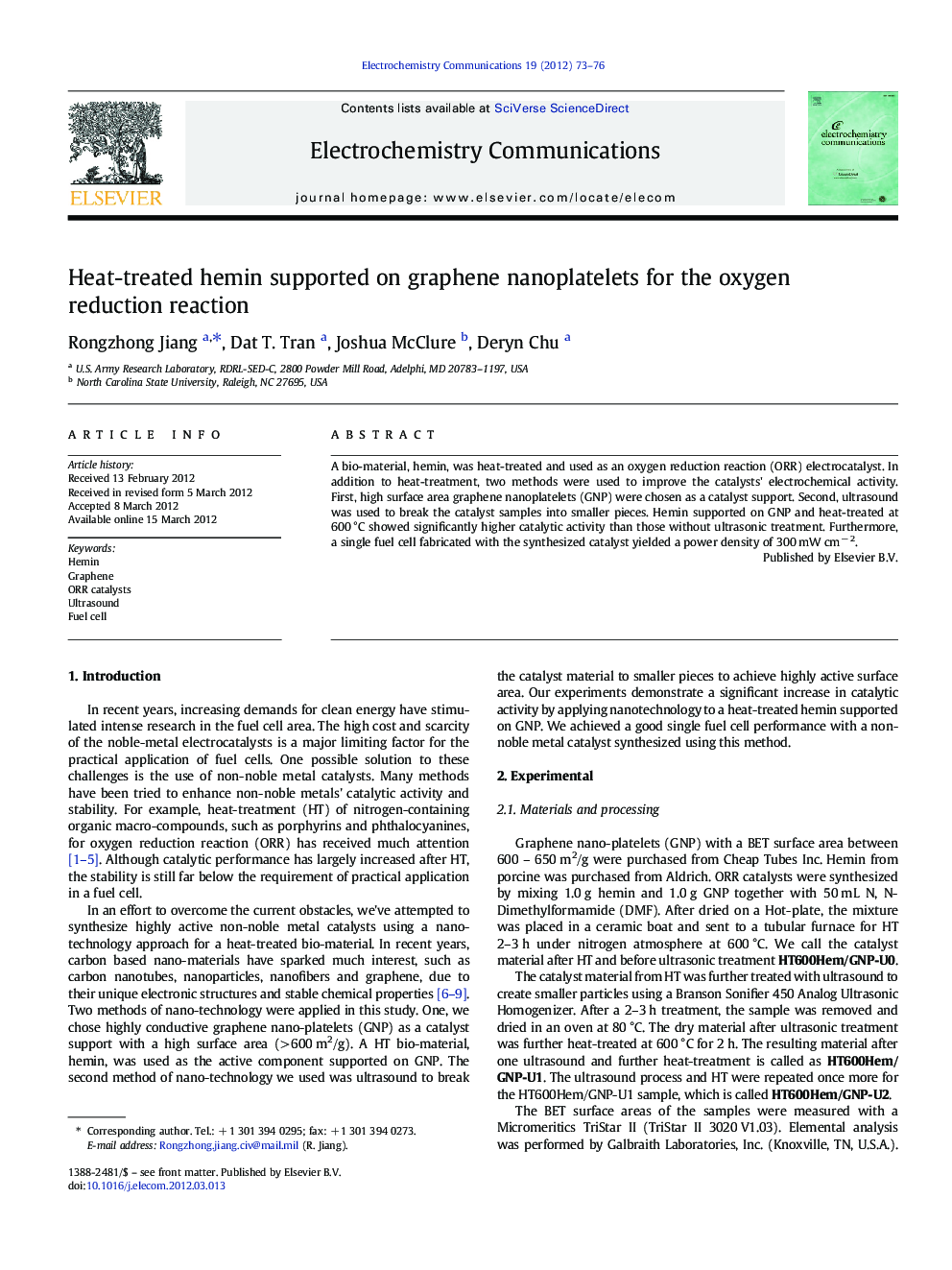| Article ID | Journal | Published Year | Pages | File Type |
|---|---|---|---|---|
| 179861 | Electrochemistry Communications | 2012 | 4 Pages |
A bio-material, hemin, was heat-treated and used as an oxygen reduction reaction (ORR) electrocatalyst. In addition to heat-treatment, two methods were used to improve the catalysts' electrochemical activity. First, high surface area graphene nanoplatelets (GNP) were chosen as a catalyst support. Second, ultrasound was used to break the catalyst samples into smaller pieces. Hemin supported on GNP and heat-treated at 600 °C showed significantly higher catalytic activity than those without ultrasonic treatment. Furthermore, a single fuel cell fabricated with the synthesized catalyst yielded a power density of 300 mW cm− 2.
► Oxygen reduction reaction catalysts were synthesized by heat-treatment of hemin. ► Graphene nanoplatelets are an excellent support for synthesis of these catalysts. ► Ultrasound is a powerful tool to break the catalysts into nano-materials. ► The catalysts showed highly catalytic activity for oxygen 4-electron reduction. ► A single fuel cell fabricated with these catalysts yielded 300 mW·cm– 2.
